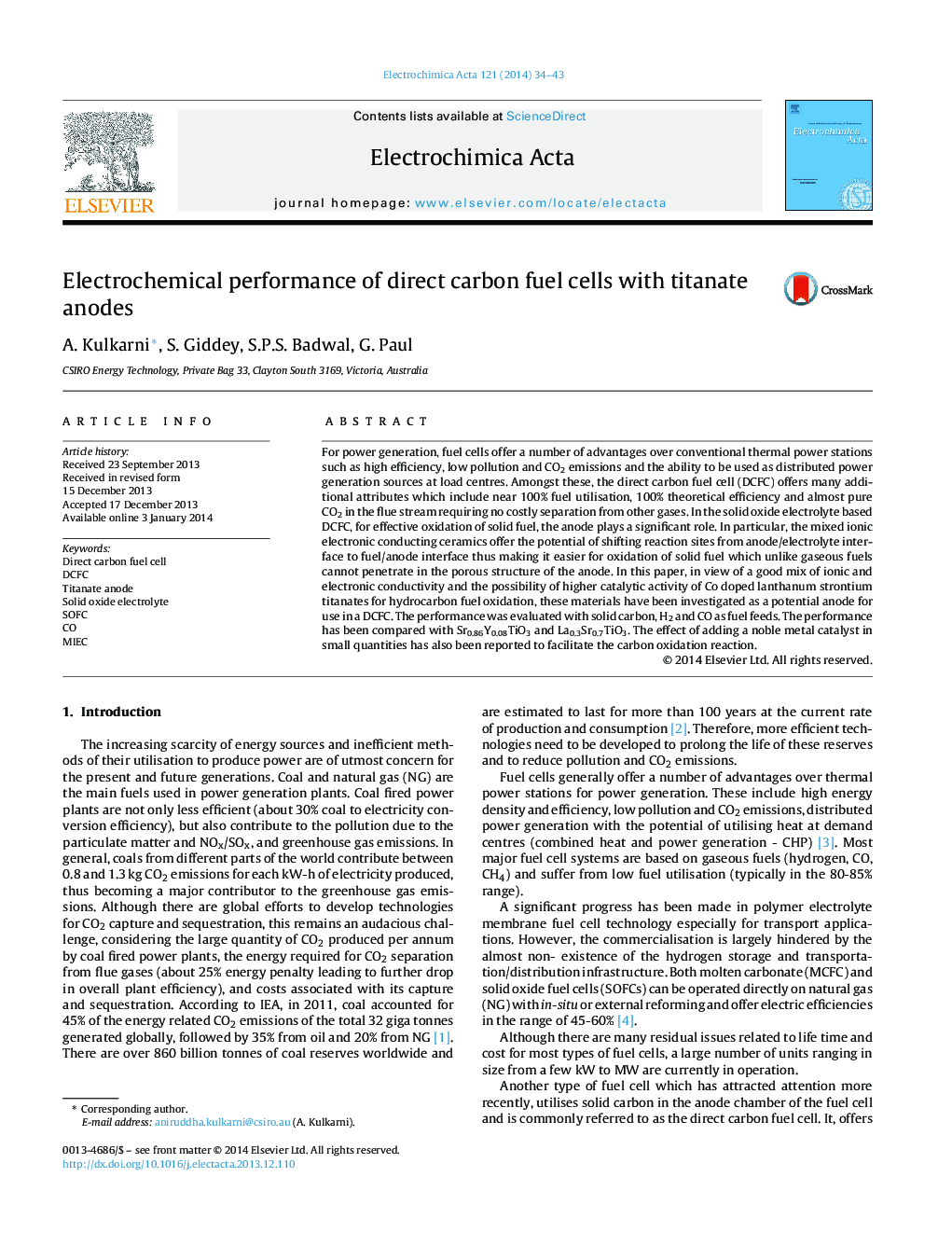| کد مقاله | کد نشریه | سال انتشار | مقاله انگلیسی | نسخه تمام متن |
|---|---|---|---|---|
| 186529 | 459617 | 2014 | 10 صفحه PDF | دانلود رایگان |
For power generation, fuel cells offer a number of advantages over conventional thermal power stations such as high efficiency, low pollution and CO2 emissions and the ability to be used as distributed power generation sources at load centres. Amongst these, the direct carbon fuel cell (DCFC) offers many additional attributes which include near 100% fuel utilisation, 100% theoretical efficiency and almost pure CO2 in the flue stream requiring no costly separation from other gases. In the solid oxide electrolyte based DCFC, for effective oxidation of solid fuel, the anode plays a significant role. In particular, the mixed ionic electronic conducting ceramics offer the potential of shifting reaction sites from anode/electrolyte interface to fuel/anode interface thus making it easier for oxidation of solid fuel which unlike gaseous fuels cannot penetrate in the porous structure of the anode. In this paper, in view of a good mix of ionic and electronic conductivity and the possibility of higher catalytic activity of Co doped lanthanum strontium titanates for hydrocarbon fuel oxidation, these materials have been investigated as a potential anode for use in a DCFC. The performance was evaluated with solid carbon, H2 and CO as fuel feeds. The performance has been compared with Sr0.86Y0.08TiO3 and La0.3Sr0.7TiO3. The effect of adding a noble metal catalyst in small quantities has also been reported to facilitate the carbon oxidation reaction.
Journal: Electrochimica Acta - Volume 121, 1 March 2014, Pages 34–43
